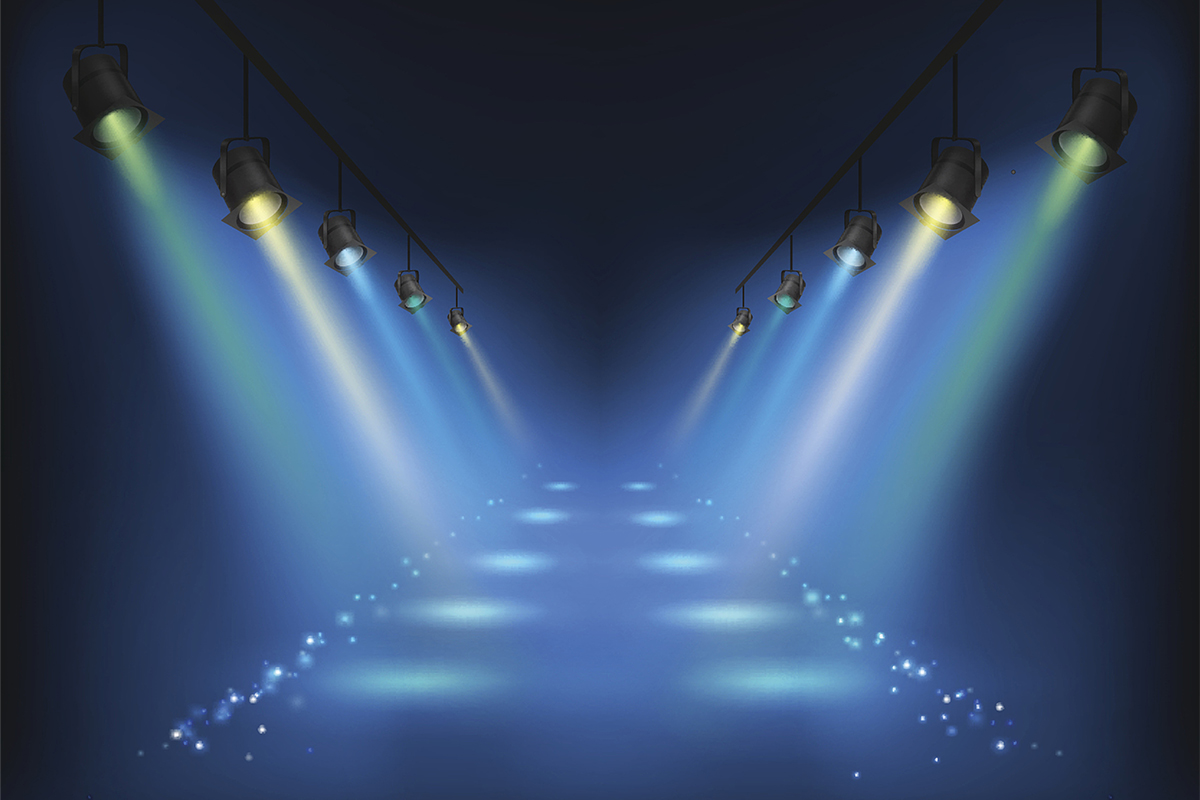
PAR cans, or parabolic aluminized reflector cans, serve as the foundation of many stage lighting designs. Their wide beam angle makes them effective for casting a broad and even wash of light to establish the overall visibility and ambiance of the performance space. With their wide beam angles, PAR cans are capable of covering large areas on the stage. This characteristic makes them effective for creating a broad and consistent base of light, serving as a canvas upon which more intricate lighting effects can be layered. PAR cans are adaptable to different stage layouts and production requirements. They can be mounted on lighting rigs, suspended from overhead structures, placed on the ground, or rigged in various configurations. This adaptability ensures that they can be seamlessly integrated into different stage setups. Their relatively simple design and functionality make them an economical choice for venues or productions with budget constraints. These stage lighting instruments can complement the capabilities of spotlights, moving head lights, or other fixtures to achieve a comprehensive and dynamic lighting design.
The unique features of LED PAR cans have become integral to modern stage lighting, offering a range of advantages that align with the evolving needs of the entertainment industry. LED PAR cans consume significantly less power than traditional incandescent or halogen PAR cans. LED PAR cans withstand the rigors of live performances. Their sturdy construction contributes to their durability and long lifespan. The longevity of LED PAR cans enhances reliability and minimizes downtime for maintenance. The compact and lightweight nature of LED PAR cans makes them easier to handle during setup, teardown, and transportation. The reduced size and weight of LED PAR cans contribute to greater versatility in configuring stage lighting setups. LED PAR cans provide smooth and precise dimming options, allowing for seamless transitions between different lighting scenes. LED PAR cans often feature RGB (Red, Green, Blue) color mixing capabilities, allowing for a vast spectrum of colors to be created. LED PAR cans support a variety of creative effects, including strobing, color fades, and chases. This capability allows lighting designers to add dynamic and visually engaging elements to performances, contributing to the overall impact of the production. They can be integrated into complex lighting designs, synchronized with multimedia elements, and programmed to create intricate and synchronized lighting sequences. Integration with advanced control systems such as DMX (Digital Multiplex) enables precise and centralized control over multiple fixtures, facilitating synchronized lighting cues, dynamic sequences, and intricate lighting designs. Some LED PAR cans offer remote control options and wireless connectivity. This allows for convenient adjustments to settings without the need for direct physical access to the fixtures, providing greater flexibility during performances. Compared to some other types of stage lighting fixtures, LED PAR Cans are often considered cost-effective, making them an attractive choice for budget-conscious productions.
LED PAR cans find applications in a broad spectrum of lighting scenarios, ranging from basic stage wash lighting to accentuating details, creating effects, enhancing outdoor spaces, and contributing to the overall visual aesthetic of performances and events. PAR cans are frequently used to provide general wash lighting across a wide area of the stage. This helps in evenly illuminating large sections and creating a basic foundation of light. These fixtures are utilized for accent lighting to highlight specific elements, performers, or objects on the stage. This adds emphasis and draws attention to key areas. PAR cans often come with color-changing capabilities, allowing them to produce vibrant color washes. This is beneficial for creating dynamic and colorful atmospheres during performances. Due to their robust construction, LED PAR can lights are suitable for outdoor lighting applications. They are often used for concerts, events, or architectural lighting where weather resistance is crucial. PAR cans are not limited to stage use and are used for architectural lighting, illuminating structures, facades, or outdoor spaces with their versatile and powerful output. PAR cans are widely used in live performances, concerts, and theatrical productions to create a versatile and dynamic lighting environment.










































